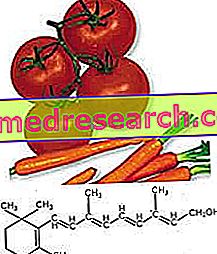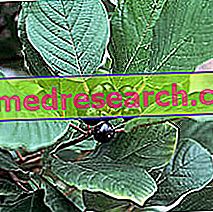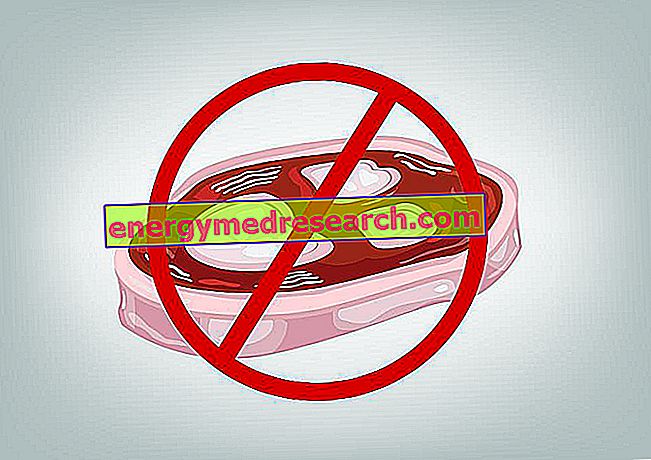Chemical Structure
Vitamin A (or retinol) is a fat-soluble vitamin.
Retinol is a superior alcohol, found in nature predominantly in esterified form, whose structure was discovered by Karrer in 1931.
It consists of a β-ionic ring and a side chain containing a series of conjugated double bonds.
The biologically active forms of vitamin A are:
- retinol
- retinaldehyde
- retinoic acid

Retinol as such is found in foods of animal origin, while those of plant origin are the carotenoids its precursors.
The currently identified carotenoids are around 600, those with provitaminic activity are: α-, β-, γ-carotene and β-cryptoxanthin.
Other dietary carotenoids, but without provitaminic activity, are: lycopene, zeaxanthin, lutein and canthaxanthin.
At the level of the intestinal mucosa most carotenes are transformed, by the action of a 15, 15'-carotene-dioxygenase, into retinaldehyde, which can then be reduced to retinol.
Theoretically, from each β-carotene molecule two retinol can be formed, in practice it is not absorbed more than 1/3 and less than half is used, so from one μg of β-carotene we will have 0.167 μg of retinol (1 / 6).
Absorption
Retinol esters are hydrolyzed by pancreatic lipases and carboxyl ester-lipases and by enteric retinyl ester-hydrolases.
Not more than 75% of the ingested retinol is absorbed by facilitated diffusion (at physiological concentrations) and by passive diffusion (at high concentrations).
The absorption of vitamin A is influenced by both the quantity and quality of dietary lipids. In addition to the presence of bile acids.
In enterocytes, the retinol is esterified and becomes part of the chylomicrons, which reach the bloodstream through the lymphatic circulation and go to the liver, which contains 50% to 80% of the body's retinol.
Hepatic retinol can be transferred to the bloodstream, where it is transported as retinol-BP associated with transthyretin (prealbumin) to tissues; the blood concentration of retinol is equal to 40 ÷ 80 μg / 100ml.
Functions
Vitamin A is essential for:
- transport (retinol)
- storage (retinyl ester)
- cell differentiation (retinoic acid)
- reproduction (retinol)
- vision (retinaldehyde)
Retinol has a specific action in the process of vision: the human retina has two distinct photoreceptor systems contained in the rods, sensitive to light
Vitamin A also performs other functions that are not completely clarified, probably in the form of retinoic acid:
- deficient animals show adrenal insufficiency and reduced glycogen formation
- it is necessary in the mucous tissue for the synthesis of mucopolysaccharides
- plays an important role in the conservation of cell membranes (antioxidant function: fights free radicals, and for this figure as an ingredient in the most effective anti-wrinkle creams, it counteracts the harmful effects of smoke and pollution as well as providing a valuable aid in fighting the skin aging), in protein synthesis and in the formation of bones and skeleton
Vitamin A in cosmetics with an anti-aging action
Deficiency and toxicity
Retinol deficiency causes:
- squamous metaplasia of epithelial cells, with initial appearance of follicular hyperkeratosis (corneification at the level of hair follicles), followed by frinoderma (toad skin) with loss of skin in the form of large scales;
- corneification of the bronchiolar mucous (xerosis), which facilitates the implantation of bronchiolitis;
- corneification of the epithelium of the renal pelvis from that of pyelitis and / or cystopielites;
xerophthalmia, conjunctival and corneal xerosis, characterized by dryness, thickening, pigmentation and loss of shine, with formation of gray-whitish spots (Bitot spots);
- keratomalacia, colliquative necrosis of the cornea, with the appearance of an ulcer that can develop to destroy the cornea itself with protrusion and prolapse of the iris and crystalline lens;
- emeralopia or nictalopia or crepuscular blindness, due to the decrease in the concentration of rhodopsin in the rods.
High doses of vitamin A (over 300 mg) cause acute intoxication characterized by: nausea, vomiting, migraine headaches, visual disturbances and loss of coordination of movement, symptoms that with adequate retinol intake disappear in a short time.
High doses of retinol (6 ÷ 12 mg) for years cause the appearance of a chronic syndrome with: hair loss, loss of appetite, anemia, muscle pain and neurological symptoms.
High doses of carotenoids cause an alteration of the pigmentation of the skin (yellow-orange color).
Feeder foods and requirements
Vitamin A is contained in foods of animal origin and in particular: meat, offal, some fish, eggs, milk, cheese, butter.
Carotenoids are found in foods of plant origin and in particular:
- in orange-yellow vegetables such as carrots, pumpkins, peppers;
- in green leafy vegetables such as spinach and broccoli;
- in some fruits, such as apricots, melons, yellow peaches, pink grapefruit and papaya.
However, carotenoids are also present in foods of animal origin such as eggs and milk and derivatives (see: VITAMIN A FOOD)
The recommended intake levels of vitamin A are referred to as retinol equivalents (RE).
- 1 RE = 1 μg retinol = 6 μg β-carotene = 12 μg other carotenes = 3.33 IU
- 1 IU = 0.3 μg retinol = 1.8 μg β-carotene = 3.6 other carotenes
The recommended intake levels are:
- 700 RE for man;
- 600 RE for women;
- 700 RE for the expectant mother;
- 950 RE for the nurse.
In recent years a new conversion index, the RAE (equivalent retinol activity) has taken hold, preferred because it correlates better with the human abilities of absorption and conversion of carotenoids into vitamin A.
1 µg RAE = 1 µg retinol = 2 µg all-trans-β-carotene from supplements = 12 µg of all-trans-β-carotene from foods = 24 µg α-carotene or β-cryptoxanthin from foods



